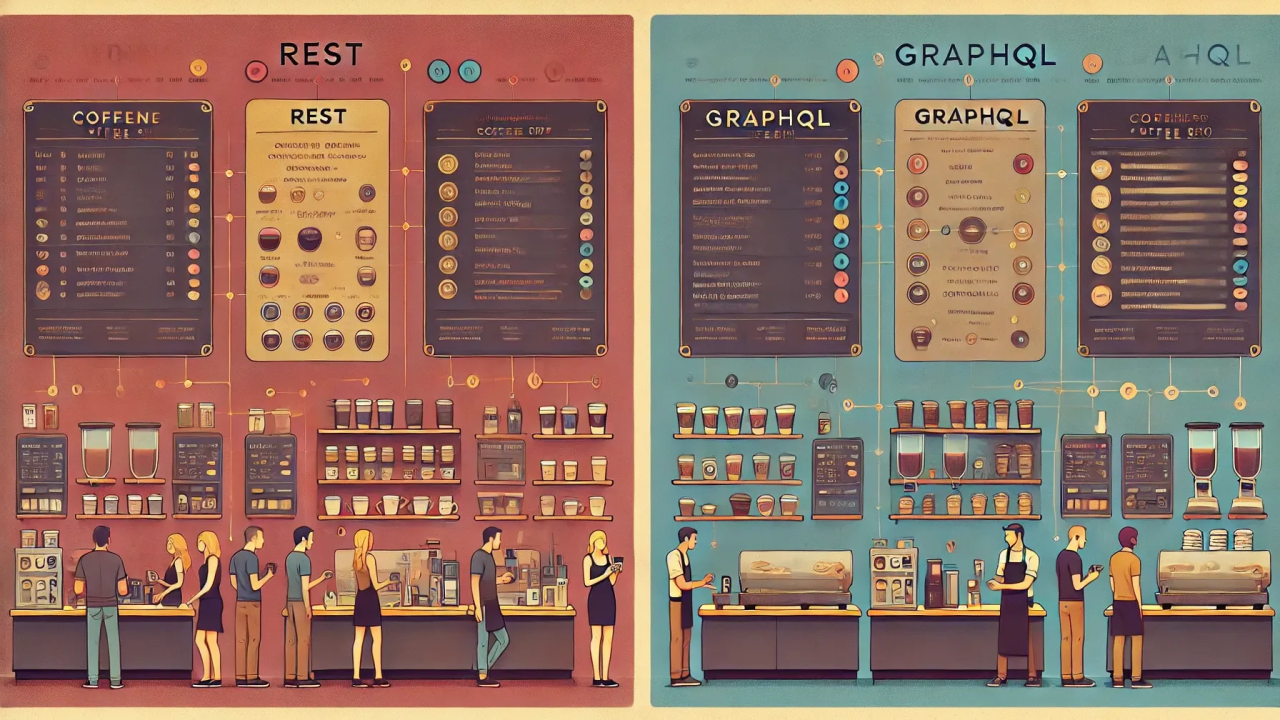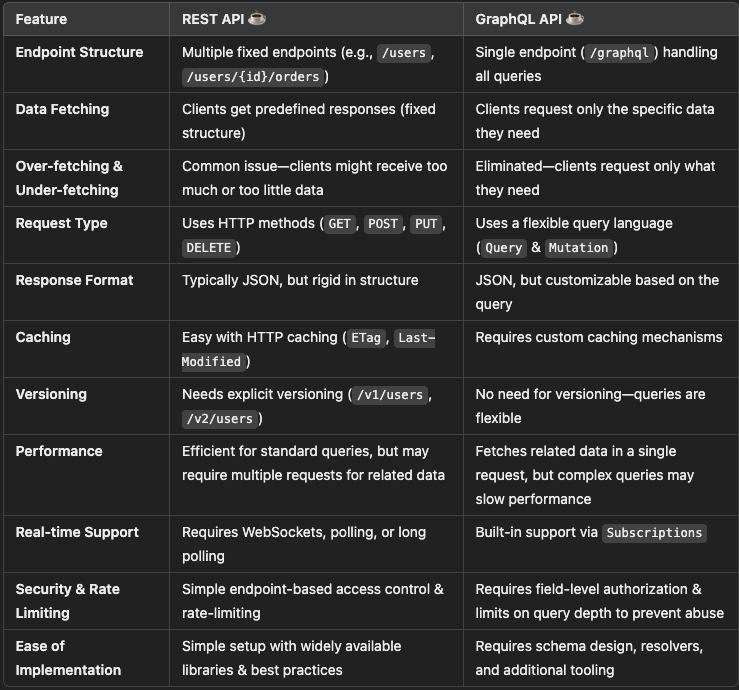The Coffee Shop Conundrum: REST vs. GraphQL
Apr 15, 2025

Imagine you walk into Joe’s Coffee, a popular café in your neighbourhood. You’re in a hurry and just want a black coffee, while your friend, an Instagram foodie, wants to know all about the origin of the beans, the roasting process, and the barista’s favourite brew method.
Scenario 1: The REST Coffee Shop
At Joe’s Coffee, the barista hands you a pre-printed menu listing all available drinks.
✅ You quickly find "Black Coffee" and place your order.
❌ Your friend, however, wants details about the coffee beans and milk alternatives. Since the menu doesn’t provide all this information, they have to ask follow-up questions.
Each time, the barista refers to a different menu section (API endpoint) to fetch answers.
This results in multiple trips to the counter, which takes time. However, the barista is fast because they have a well-structured process, and popular orders are already pre-prepared (cached), reducing wait time.
Scenario 2: The GraphQL Coffee Shop
At GraphQL Café, the barista hands you a form and says: "Tell me exactly what you need, and I'll get everything in one go."
✅ You write "Black Coffee", and that’s all you get. No unnecessary details.
✅ Your friend writes "Tell me about the Ethiopian blend, its roast profile, and whether oat milk is available."
✨ The barista retrieves all the details in one go, saving time and making the process smoother.
This customised data fetching (GraphQL query) prevents over-fetching (getting too much data) and under-fetching (not getting enough data), making it more efficient for diverse customer needs.
However, if too many customers request highly detailed orders, the baristas might slow down (server load), and since orders are made on demand, they can’t rely on pre-prepared drinks (caching challenges) like in Joe’s Coffee.
Technical Breakdown: REST vs. GraphQL

When to Use What?
Both REST and GraphQL have strengths and weaknesses. The right choice depends on the specific use case, performance needs, and how the API will be consumed.
✅ Use REST if:
✔️ Your API serves fixed data structures that don’t change often (e.g., public APIs, microservices).
✔️ You need built-in caching and efficient rate-limiting.
✔️ You want straightforward security & authentication based on endpoints.
✔️ Your team is more familiar with REST and HTTP best practices.
✅ Use GraphQL if:
✔️ Your API needs to serve multiple clients with different data needs (e.g., web, mobile, dashboards).
✔️ You want to reduce multiple network requests by fetching related data in one query.
✔️ You need real-time updates (GraphQL subscriptions).
✔️ You are dealing with complex data relationships and need a flexible query language.
However, GraphQL requires additional considerations:
Performance tuning is needed to prevent expensive queries from slowing down servers.
Security must be managed carefully to limit query complexity and control data access.
Caching needs to be manually implemented, unlike REST which can leverage HTTP caching.
Just like in our coffee shop analogy, REST’s structured efficiency is great for high-demand, predictable requests, while GraphQL’s flexibility is ideal for customized, diverse needs.
Final Thought: The Best Coffee Shop Wins
The best coffee shop isn't always REST or GraphQL—it depends on your customers. If your application deals with fixed, structured data, REST is great. But if you're serving diverse consumers with dynamic data needs, GraphQL might be the game-changer.
Now, if only my local café took orders via GraphQL… I wouldn’t have to explain oat milk every time! ☕